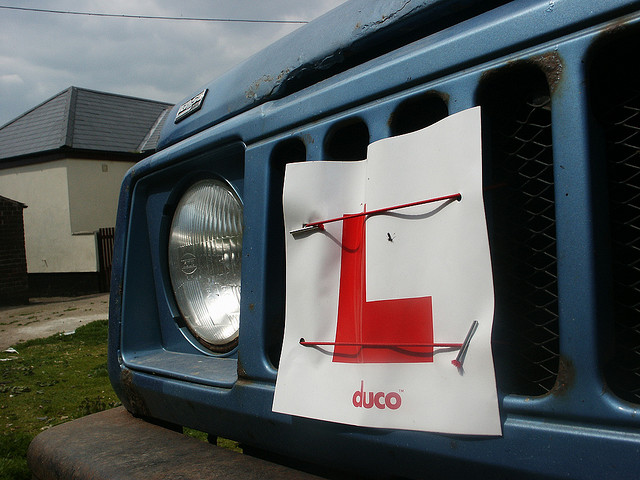
Teaching your son or daughter to drive can be a stressful experience, but by taking on board a few of these helpful tips you can help make it more enjoyable and rewarding experience for both of you.
Gaining a driver’s licence is one of the first milestones in a young person’s journey to adulthood and independence. The sense of freedom that comes with being able to drive and owning your first car is often cited as the driving force behind a teenager’s desire to get behind the wheel, but let’s not forget, it can also benefit the parents who have spent the past sixteen or more years running a not-for-profit taxi service.

The majority of learner drivers rely on professional instructors to get them up to the level required to pass their test, but the first few forays onto the road are usually done in the family car alongside a parent.
The first time behind the wheel can be both exciting and nerve wrecking, and such tension can easily cause tempers to flare. For a parent, it can therefore be a stressful experience as you look to strike a balance between teaching and ensuring the lessons run smoothly and safely. So how can you make the most of those initial lessons with your son or daughter? Check out the guide below for some helpful tips.
Safety first
Driving may be part of everyday life for a lot of people, but it is none the less one of the most dangerous things you can do. By making the safety of your lesson the top priority, you can help settle your own nerves while making sure your son or daughter understands the basic principles behind safe driving.
-
Pre-lesson brief:
It may be tempting to immediately start with the gears and clutch control, but giving your teenager a rundown of the basics prior to getting behind the wheel can be beneficial. Explain the importance of inspecting tyres and break lights before setting off on a journey, pop open the bonnet and point out the key components in order to provide them with a basic understanding of car maintenance. These factors are crucial when owning and maintaining your first car.
-
Safety overview:
Once inside your car, demonstrate how to adjust the height of the seat, position of the head rest and the steering wheel. Give an explanation of the various dashboard features, as well as indicators, light switches etc. This will help familiarise your teenager with siting in the driving seat, and make them feel a bit more comfortable when on the road.
Keep calm and carry on
No matter how apprehensive you may feel, your son or daughter will likely be even more on edge. As the instructor, it is imperative that you stay calm and composed throughout.
Remember, if your teenager plans to receive lessons from a professional instructor later on, then you can leave the more advanced driving instructions to them. Instead focus on giving a calm, gentle introduction to driving. Encourage them to take their time and observe their surroundings. If you sense they are getting flustered or panicky, simply ask them to pull over for a few minutes.
Don’t make the lessons last too long either, as the stress and nerves can tire out a young driver fairly quickly, so aim for 45 minutes to an hour. Here are some other tips to consider:
-
Start somewhere safe:
Large and spacious parking lots make for a great starting point. It’s a good idea for you to drive the car there, before letting your son or daughter jump into the driving seat. Practice starting and stopping, with emphasis on smooth acceleration and breaking. This helps them get a feel for the vehicle and how it responds to their manoeuvres.
-
Responsible driving:
Bad driving habits can be easily picked up, but getting rid of them can be a challenge. Emphasise the importance of being fully focused on driving, which means putting cell phones out of sight and keeping music volume down to a reasonable level. Eating and drinking is another common distraction, so make sure your teenager is aware of the risk posed by such activities.
-
Relax:
If your son or daughter looks tense, tell them to relax their shoulders and arms. Ensure the steering wheel and seat is adjusted according to their height. Relaxed muscles respond faster than tight, tense ones, so feeling comfortable while driving is important.
What tips do you have for teaching a teenager to drive?
Featured images:
License: Creative Commons
image source
Catherine is a keen blogger with a passion for writing. Working with various organisations, Catherine covers a variety of topics from lifestyle to cars and technology.







